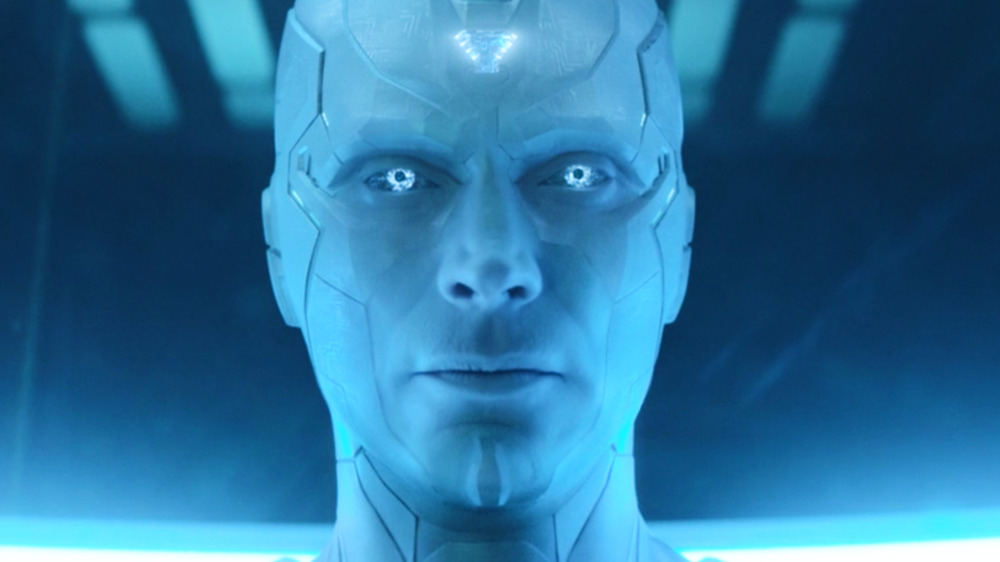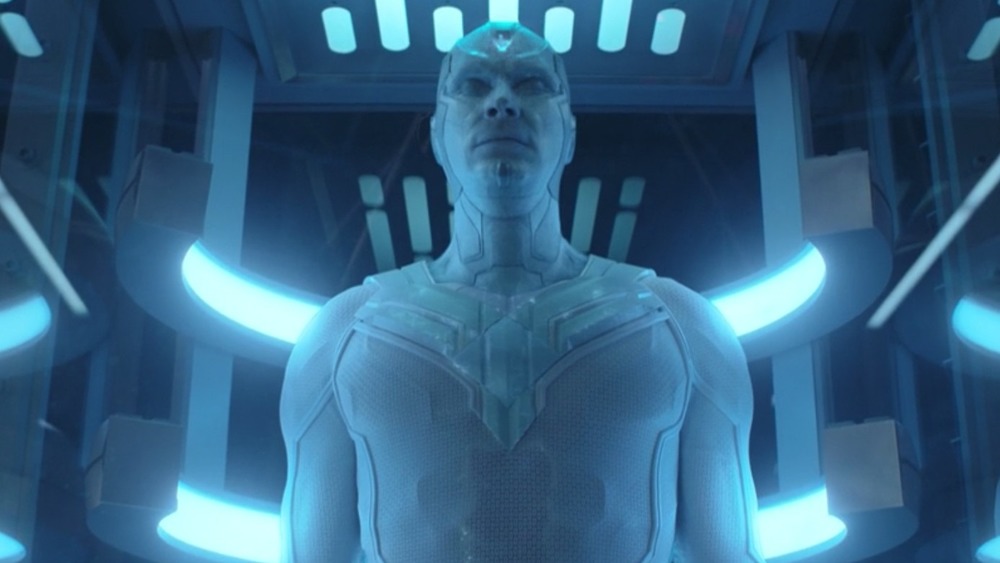WandaVision Episode 8: White Vision Post-Credits Scene Explained
Contains spoilers for WandaVision episode 8
The first-ever Marvel Studios television production on Disney+, WandaVision started out as a slow, occasionally creepy burn. Episode 1 brought viewers into the black-and-white world of Westview, what appeared to be a picture-perfect portrait of suburban bliss, with Wanda Maximoff (Elizabeth Olsen) and her android husband Vision (Paul Bettany) at the center of it all. Playing on tropes and aesthetics found in sitcoms from the 1950s and 1960s, WandaVision at first appeared to be an antics-of-the-week show about an unlikely couple, their nosy neighbor, their community, and their co-workers. Something clearly wasn't right, though: Vision died back in Avengers: Infinity War; Wanda wasn't even alive in the '50s, '60s, or '70s; S.W.O.R.D. has started an investigation into Westview because its residents are real people who've gone missing; and the person closest to Wanda and Vision in this world isn't who she seems.
As the Marvel Cinematic Universe's newest and strangest production has inched closer and closer to its endgame, things have become slightly more conventional — though by no means less impactful. WandaVision episode 8, entitled "Previously On," finally gives fans some answers, courtesy of recently revealed "magical girl" Agatha Harkness (Kathryn Hahn) and her quest to get to the bottom of Wanda's absurd power set. In the process, it's revealed that Agatha gained her incredible skills, which materialize in purple beams of energy, way back in 1693. WandaVision episode 8 also explains to viewers that Wanda is actually an ultra-powerful entity that Agatha dubs — everyone together now — the Scarlet Witch. Oh, and we also find out that Wanda actually never stole Vision's dead body, contrary to what S.W.O.R.D. Director Tyler Hayward (Josh Stamberg) claimed in a previous episode. The version of Vision we've seen so far has been Wanda's own magical creation, crafted via Chaos Magic.
But the episode has another, arguably even more shocking color-coded surprise at the very end. Episode 7 introduced post-credits scenes to the WandaVision mix, and episode 8 continues the emerging trend by finally revealing the mysterious project S.W.O.R.D. has been working on: It's ... Vision. Director Hayward and his crew have managed to rebuild the original Vision's corpse, and the episode ends with this new, eerily white version reactivating.
Let's take a look at the meaning of the "White Vision" post-credits scene in WandaVision episode 8.
White Vision is an emotionless, resurrected version of the synthezoid
Everything in WandaVision has a meaning — just compare the seemingly throwaway "Yo-Magic" yogurt commercial from episode 6 to what Agatha does to her coven in episode 8. As such, White Vision isn't some random creation the show decided to whip up.
White Vision has a robust history in the Marvel comics. He's basically a resurrected Vision, without any of the things that actually make him Vision. Sure, he looks the same (save for the color), and likely has the same powers. However, much like his color, his emotions and innate goodness are ... gone. Essentially, he's what Director Hayward claims Vision is and what he thinks the synthezoid should be: a weapon.
Comic book readers first saw Vision in white in the 1989 "Vision Quest" storyline of Avengers West Coast, created by John Bryne and Mike Machlan. In the comic run, Hank Pym is the one who rebuilds Vision after Mockingbird betrays Vision and the Avengers by aiding in the abduction of Vision. Once Vision is captured, his body is dismantled. Scarlet Witch ends up seeing Vision all broken apart and splayed out — much like she does in WandaVision — before Pym rebuilds him. The caveats that crop up during the reassembling process are twofold: Vision's red exterior was too damaged to be restored, so he's now ghostly white; and his mind, originally crafted in the comics by using brainwaves from Wonder Man, so he now doesn't have the same mind or memories that he once did.
The new Vision that boots up isn't the same one that his fellow heroes know and love. He's all android, no humanity. This causes Scarlet Witch, who's Vision's wife at this point just like in WandaVision, to plummet into a deep, dark sadness. At the same time, Scarlet Witch also comes to find out "shocking revelations about her children" — twin sons Billy and Tommy, who are part of WandaVision as well (via Marvel).
How White Vision comes to be in WandaVision is quite different, but the end result is evidently the same. Director Hayward and his S.W.O.R.D. team have been rebuilding Vision — that's what "Project Cataract," mentioned in episode 6 and further discussed in episode 7, really is. In medical terms, a cataract occurs when proteins in the lens of one's eye begin to break down, causing clouding that can make the affected area of the lens look white. This results in blurred, foggy, or otherwise distorted vision. Pretty on-the-nose for what's happening with the character Vision in the show, right?
Considering that the whole driving force of WandaVision is Wanda's deep love for Vision and her even deeper grief after losing him, one can probably assume that encountering her lost love's emotionless, reanimated monochrome corpse will be a bad time for everyone involved. It remains to be seen how the show plans to deal with this, but considering how good WandaVision is at pulling the viewers' heartstrings, it's probably safe to assume that episode 9 will be a massive emotional gut punch.

